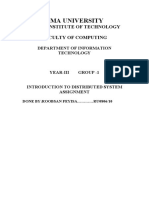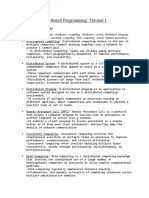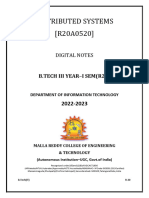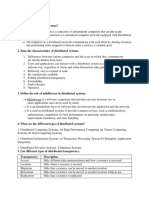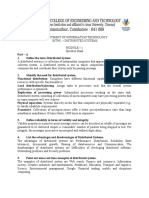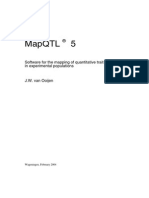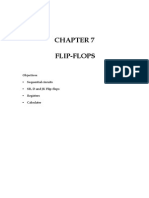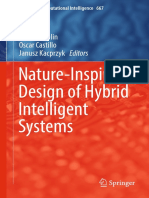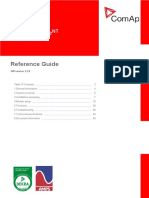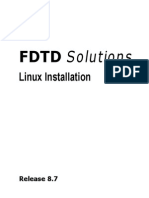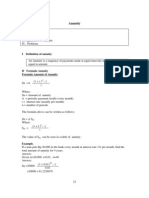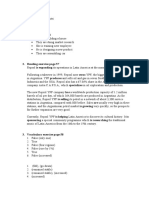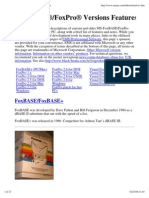0% found this document useful (0 votes)
35 views23 pagesQuestion Answer Bank - Module 1
The document provides an extensive overview of distributed computing, covering definitions, characteristics, features, advantages, transparency requirements, algorithmic challenges, and applications. It emphasizes the importance of communication, synchronization, fault tolerance, and security in designing distributed systems. Additionally, it discusses various communication primitives and design issues, along with specific applications such as mobile systems, sensor networks, and peer-to-peer computing.
Uploaded by
thejasurendranCopyright
© © All Rights Reserved
We take content rights seriously. If you suspect this is your content, claim it here.
Available Formats
Download as PDF, TXT or read online on Scribd
0% found this document useful (0 votes)
35 views23 pagesQuestion Answer Bank - Module 1
The document provides an extensive overview of distributed computing, covering definitions, characteristics, features, advantages, transparency requirements, algorithmic challenges, and applications. It emphasizes the importance of communication, synchronization, fault tolerance, and security in designing distributed systems. Additionally, it discusses various communication primitives and design issues, along with specific applications such as mobile systems, sensor networks, and peer-to-peer computing.
Uploaded by
thejasurendranCopyright
© © All Rights Reserved
We take content rights seriously. If you suspect this is your content, claim it here.
Available Formats
Download as PDF, TXT or read online on Scribd
/ 23











